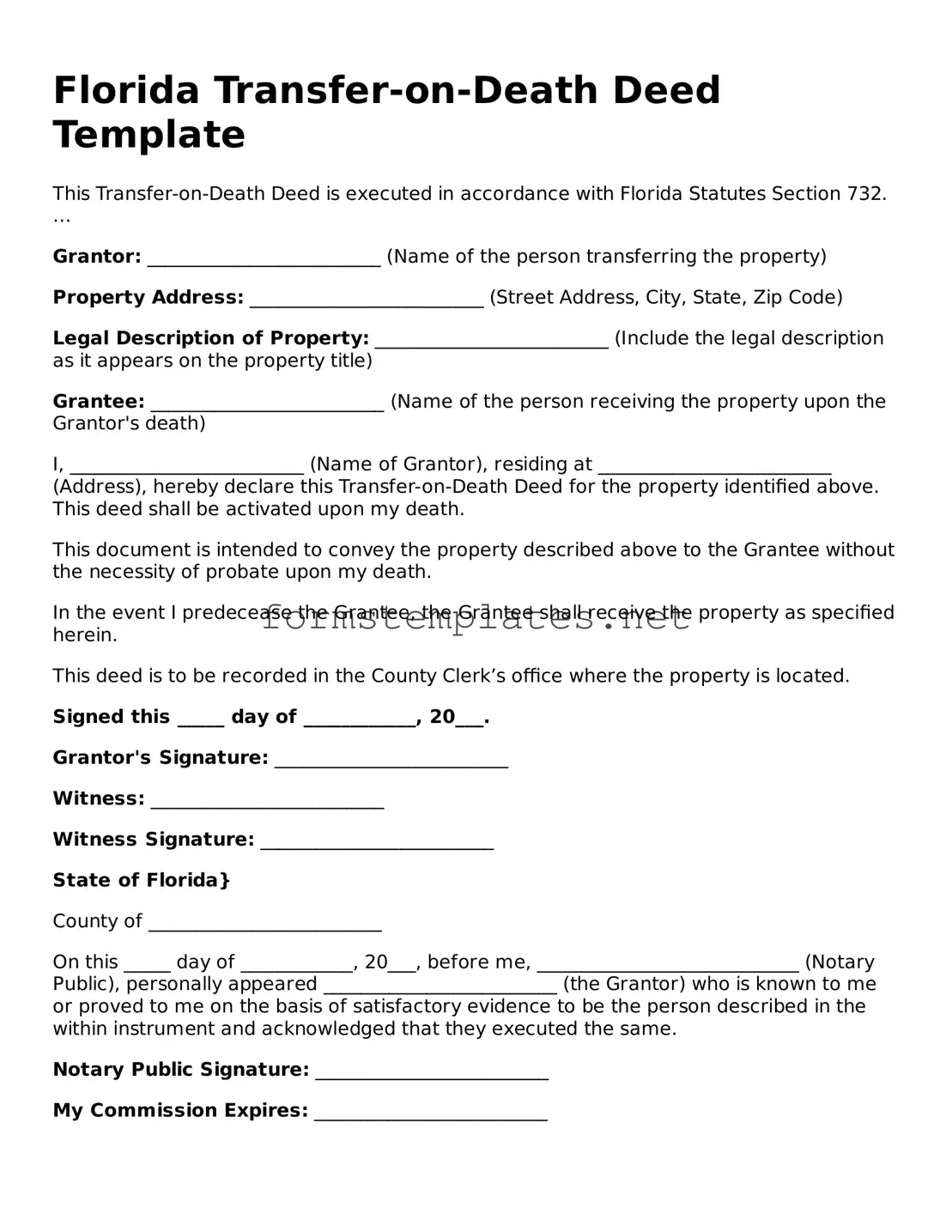Florida Transfer-on-Death Deed Template
This Transfer-on-Death Deed is executed in accordance with Florida Statutes Section 732. …
Grantor: _________________________ (Name of the person transferring the property)
Property Address: _________________________ (Street Address, City, State, Zip Code)
Legal Description of Property: _________________________ (Include the legal description as it appears on the property title)
Grantee: _________________________ (Name of the person receiving the property upon the Grantor's death)
I, _________________________ (Name of Grantor), residing at _________________________ (Address), hereby declare this Transfer-on-Death Deed for the property identified above. This deed shall be activated upon my death.
This document is intended to convey the property described above to the Grantee without the necessity of probate upon my death.
In the event I predecease the Grantee, the Grantee shall receive the property as specified herein.
This deed is to be recorded in the County Clerk’s office where the property is located.
Signed this _____ day of ____________, 20___.
Grantor's Signature: _________________________
Witness: _________________________
Witness Signature: _________________________
State of Florida}
County of _________________________
On this _____ day of ____________, 20___, before me, ____________________________ (Notary Public), personally appeared _________________________ (the Grantor) who is known to me or proved to me on the basis of satisfactory evidence to be the person described in the within instrument and acknowledged that they executed the same.
Notary Public Signature: _________________________
My Commission Expires: _________________________
